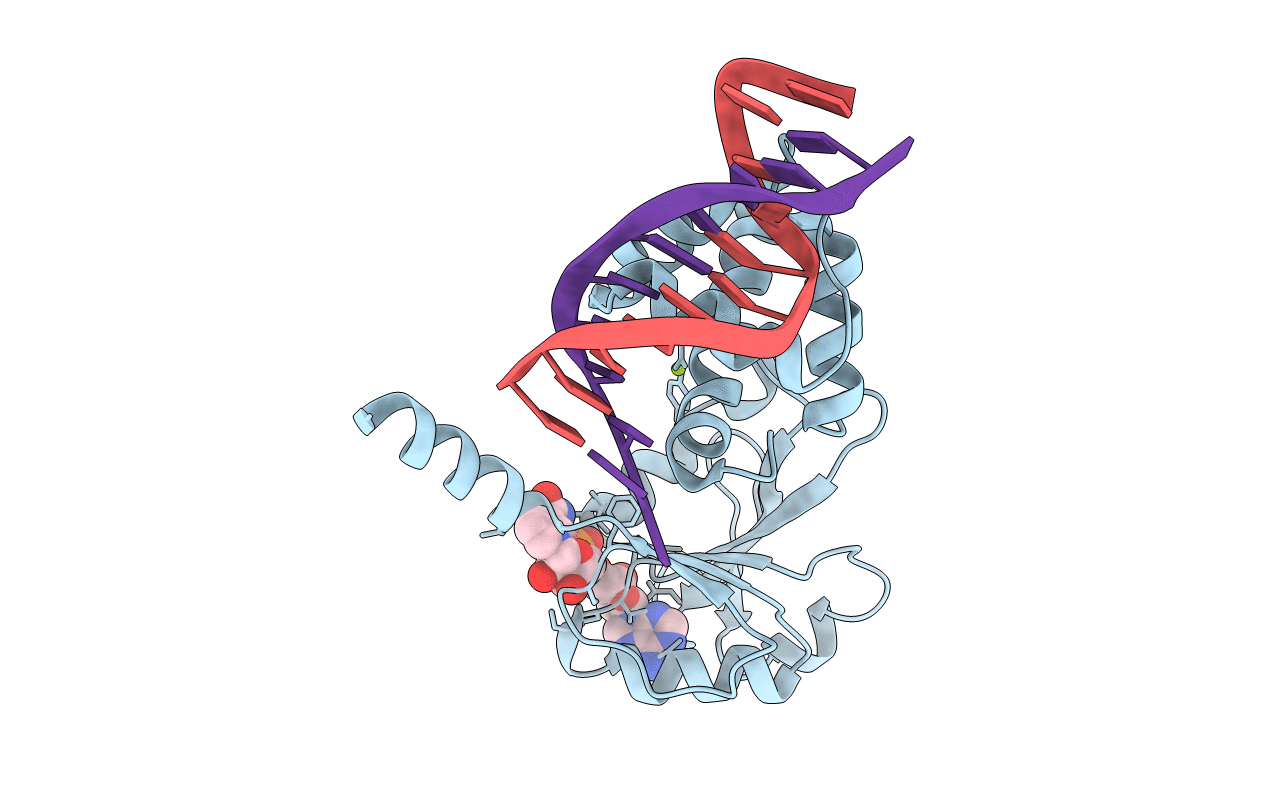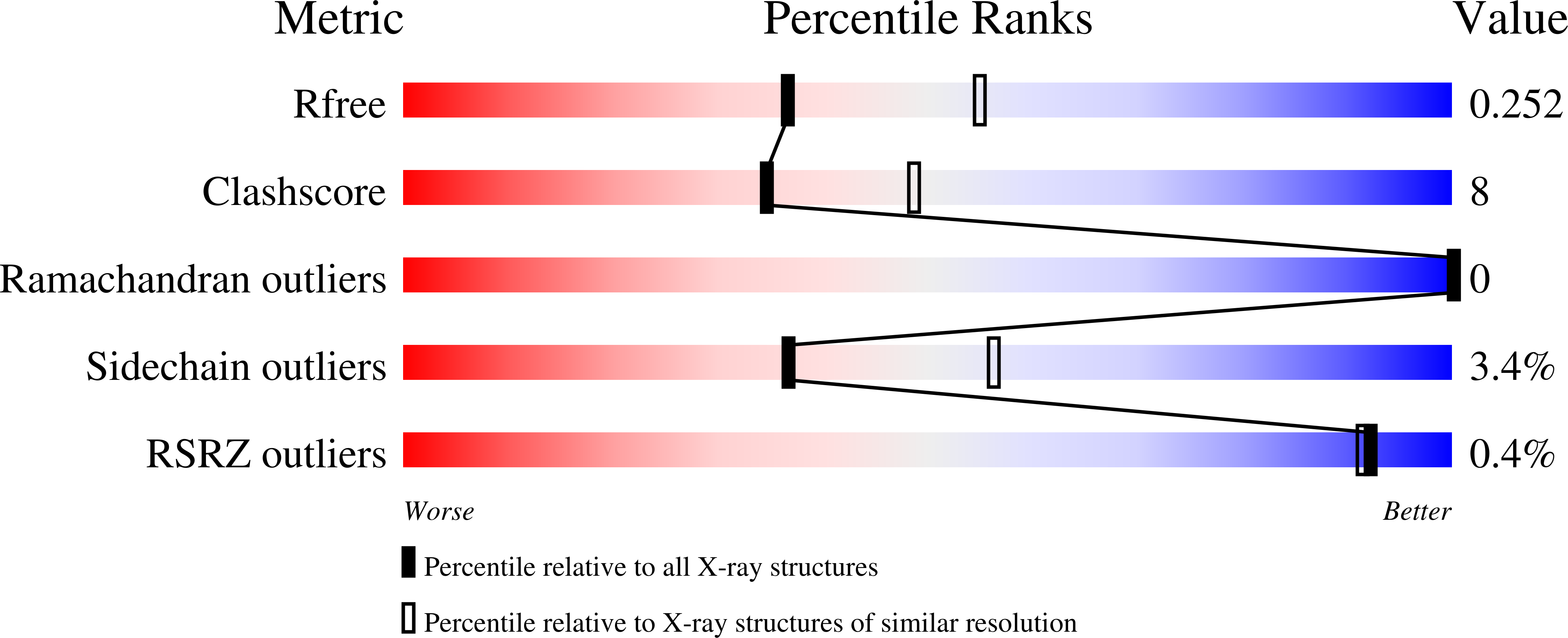
Deposition Date
2009-10-26
Release Date
2010-11-10
Last Version Date
2023-11-01
Entry Detail
PDB ID:
3KET
Keywords:
Title:
Crystal structure of a Rex-family transcriptional regulatory protein from Streptococcus agalactiae bound to a palindromic operator
Biological Source:
Source Organism:
Streptococcus agalactiae serogroup III (Taxon ID: 216495)
synthetic construct (Taxon ID: 32630)
synthetic construct (Taxon ID: 32630)
Host Organism:
Method Details:
Experimental Method:
Resolution:
2.40 Å
R-Value Free:
0.24
R-Value Work:
0.19
R-Value Observed:
0.19
Space Group:
I 2 2 2


